Disruptive Innovation and rise of the Unicorns
Over the past decade, the role of technology has transformed from that of a business enabler, to that of a business-critical core function, driving innovation and disruption. As you can see from the infographic below, this led to rise of an ever-increasing number of digital unicorns, which are racing towards the coveted $ 1 billion valuation faster than ever.

“ The democratization of technology (driven by its plummeting cost), increased access to funds and a rising entrepreneurial culture means that there are now hundreds of startups attacking traditional markets. Startups are achieving scale far quicker than analog companies ever did. Whereas the average Fortune 500 company took 20 years to reach a market capitalization of $1 billion, Google managed it in eight years, and the likes of Uber, Snapchat and Xiaomi in three years or less. ”
World Economic Forum – Digital Enterprise, 2016
In a blog published a few months ago, my colleague Steven outlined the nature of technology and business model disruption that’s happening around us, and made a compelling case for why ISVs must make the leap from building software products to digital platforms. Extending on this theme, in this blog, I wish to share some do-how nuggets on how Product Manager’s should think to lead disruptive innovation.
What’s the secret for becoming successful at disruptive innovation?
| So, how is it possible to disrupt like a Unicorn? |
| How do they do it? |
| How can I do it! |
Aspiring startups, established ISVs, and product managers would love to have answers for the above questions, so that they can also disrupt. While there is no single mantra, I believe there are some principles that ISVs and product managers can leverage to innovate and lead disruption.
Think beyond customers and their immediate needs
One of the important lessons that one should embrace from the success of the innovators and disruptors who are driven by a Massively Transformative Purpose,is to think big (exponentially), without constraints, and focus beyond serving the immediate needs of customers. In a digital world dominated by connected products and services, product managers should transform into business model managers.
This means, fundamentally new way of thinking what kind of products, services, and solutions are conceptualized and built. Without being constrained by customers, products, and costs, the focus should shift towards:
- Business Ecosystems
- Operations beyond organizations
- Technologies and Platforms
In this context, Data is the core intelligence and connecting thread, around which everything else (r)evolves.
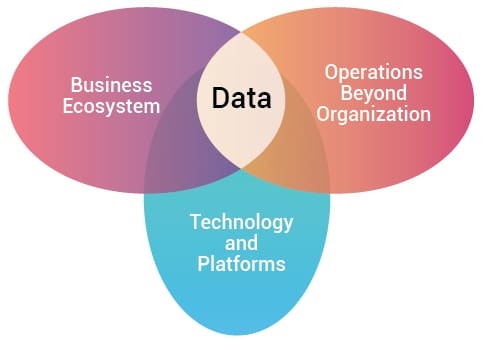
Product managers must understand that over a period of time, highly optimized solutions become repetitive models. With simulation and automation, time to develop and launch new modelshas come down dramatically, and efficient use of technology will make you a digital differentiator, rather than a mere digital enabler.
Surviving disruption through business model innovation
As much as it is important to lead disruption, it is also crucial to withstand disruption. And for that, one must be aware of the competitive landscape and other disruptors. While there are many digital unicorns disrupting the markets, how do established businesses innovate and survive disruption? Through a strategy of sticking to the core and expanding on the edges, many traditional businesses have successfully managed to weather disruptions and continue to be leaders, not just survivors. Some successful examples of surviving disruption through business model innovation are shown below:

World Economic Forum – Digital Enterprise, 2016
Make disruptive thinking part of your culture
To be disruptive, one must fundamentally rethink their approach to a product or service in a given domain. This is the only way that will yield new business and service models. Disruptive thinking needs to be a culture, which can be visualized as one where:
- Thinking of higher order problem statement is continuousl valued higher over immediate pain point
- Impactful solutions (or disruptive innovations) are valued more than incremental solutions
- Agile execution, and ability to continuously deliver innovation; Continuous learning and improvement are an integral part of the culture
While digital unicorns start with technology as their edge, traditional businesses with established networks have higher probability of successby building and leading with platforms. Established leaders can adopt a shift to low asset operating models with careful analysis of data. Technology can be used to create ecosystems to lower overall costs and increase value, and in the process drive competition and their customers to be participants in the new ecosystem. Some prominent examples of self-disruption by established market leaders:
Amazon – how to cannibalize yourself
From its start as a seller of paper books, Amazon has had the courage to disrupt itself and cannibalize its products and services. This happened when Amazon launched the Kindle e-book reader at the expense of its physical books sales. In 2010, the Kindle accounted for 62.8% of all e-readers worldwide. Amazon is now the leader in promotion and sales of digital content in an e-book market worth $1.6 billion. Amazon also disrupted itself with the launch of Amazon Prime, which undermined its DVD sales. Moreover, Amazon has made other long-term bets with the potential to further disrupt, such as Amazon Web Services, Fire smartphones and delivery drones. Amazon’s success is mainly driven by bold leadership of the CEO and an innovative corporate culture, defined by a relatively high degree of autonomy and by putting the customer in the center.
Michelin – Selling Outcomes!
Tire manufacturer Michelin has leveraged the Internet of Things to shift from a business of selling tires to selling outcomes (performance promise backed by a money-back guarantee). EFFIFUEL™ is a comprehensive ecosystem that includes sophisticated telematics, training in eco-driving techniques and the EFFITIRES™ optimized-tire management system. The service can lead to a reduction in fuel consumption of 2.5 liters for every 100 kilometers driven, representing an average annual saving of €3,200 for long-haul trucks (equivalent to at least a 2.1% reduction in total cost of ownership for truck fleet operators). The fuel savings also cut 8 metric tons of CO2 emissions. While the idea for the ‘as-a-service model’ was developed internally, Michelin realized the need for partnering, especially in the field of big data analytics. Success factors have been an emphasis on cultural change, to convince skeptical employees about the benefits of the new business model, coupled with an iterative approach built around pilots.
World Economic Forum – Digital Enterprise, 2016
Think business ecosystem not just current markets
As a business leader, disruption must aim to capture more markets, not just more customers; build new lines, not just new products or versions; target to change the rules of the game or make a new one where you are poised for fundamental disruption at scale. It is not only start-ups or digital unicorns that can disrupt. Any business that targets to create exponentially higher value through disruptive innovations will also benefit massively from such disruptions.
- Embrace “Design Thinking” and think beyond your core and extended organizations
- Build networks with customers of customers and suppliers of suppliers
- Attract competition and their customers to become participants in your network
Business ecosystem mapping, business model canvas and business strategy maps are great tools that help you visualize the big picture and identify opportunities. Businesses don’t exist in isolation, but thrive in an ecosystem. The deeper and farther you look, the more opportunities you will find to create and deliver value.
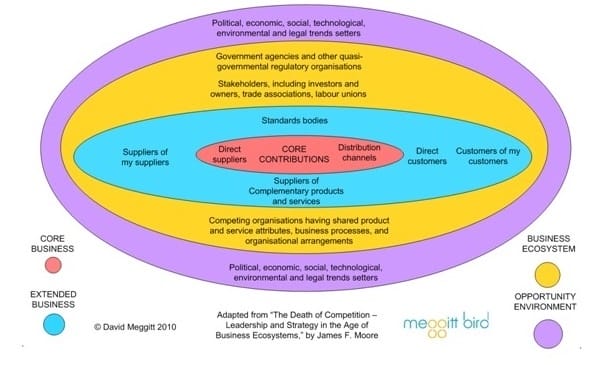
Typical contributors for a value network view of the business and its ecosystem in co-creating new microeconomics and new wealth
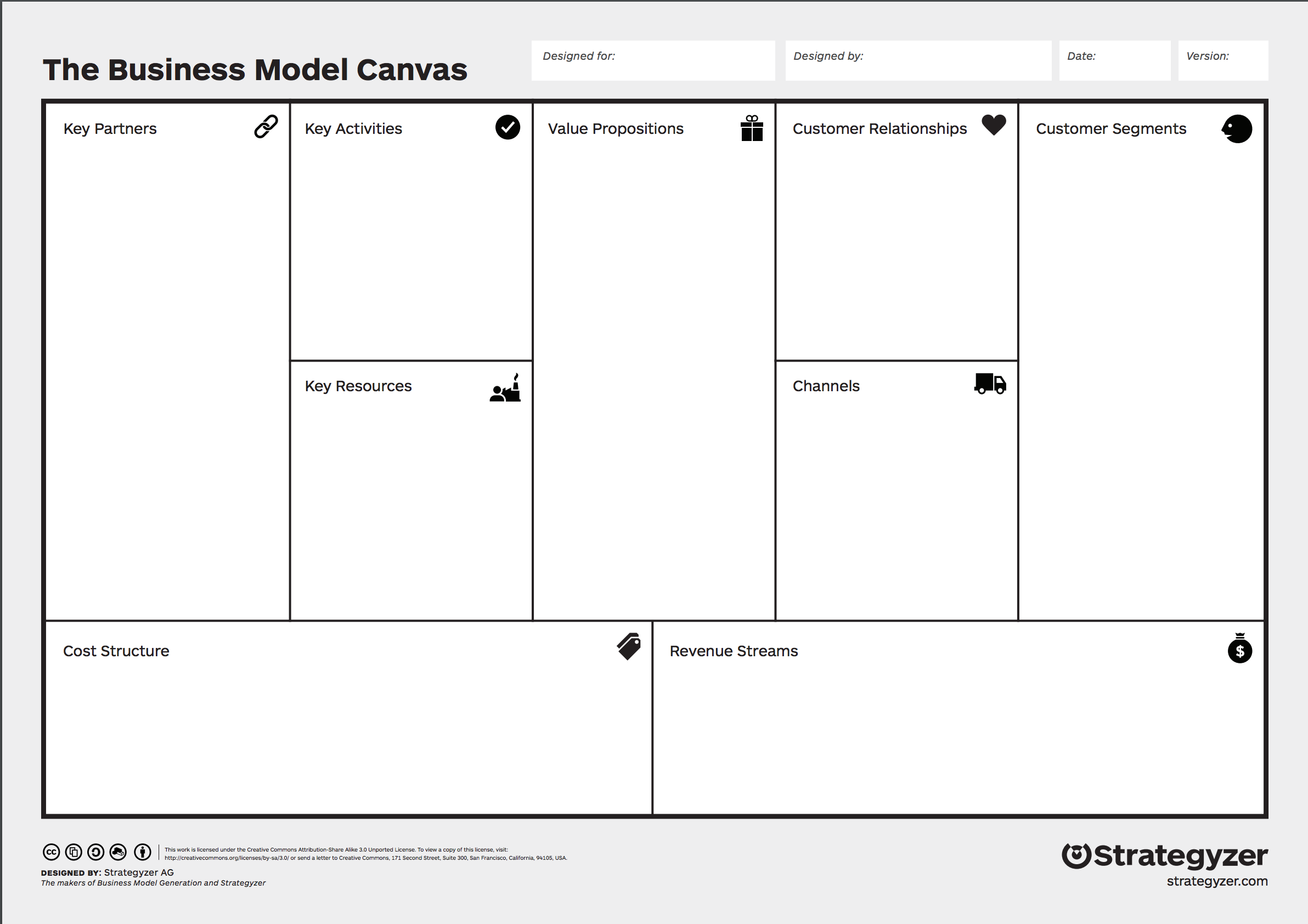 You can use the canvas to describe, design, challenge, and pivot your business model. | 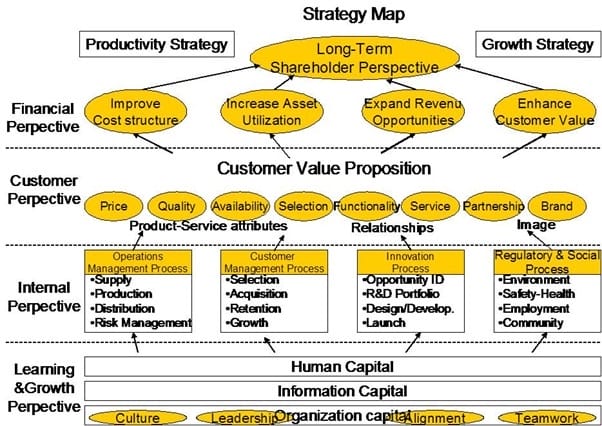 A strategy map is a diagram that shows your organization’s strategy on a single page. With a well-designed strategy map, your overall strategy can be communicated effectively. |
Source: meggitbird, Strategyzer, mbaskool
Generating highest value at least cost is key. Tools like Value Proposition Canvas can help identify value delivered by every player in the ecosystem. Looking at ways to increase aggregate value across the eco system enables discovery of high yield opportunities.
Think operations beyond organization
As time-to-market and speed are of essence to create a disruptive impact, consider all the options that are available to you –make, buy, (buy first, make next) partner, invest, and incubate:
- apply principles of “Lean Start-up”
- expand your focus to beyond costs and internal operations
- think and evolve new value chains
- build partnerships
- consider acquisitions
- incubate and invest in potential solutions that can be part of your platform
Timing is far too critical for success and survival. Organizations have to make investment decisions much quicker and change their internal processes to identify and evaluate investments, with greater emphasis on decisions informed by data. This open mind-set is already reflected by the increased presence of corporate VCs in the start-up market.
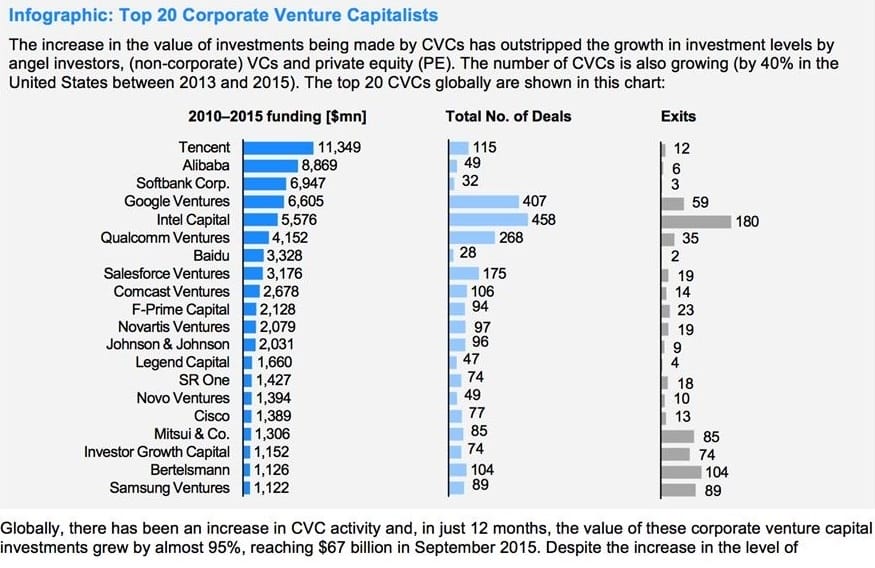
Source: World Economic Forum
Think technology, think platforms
Investment in technology must not be just for operational efficiency, and must also consider future-proofing and ability to lead the business.
- Deliver delightful experiences usingnew paradigmssuch as gamification, personalization, and localization to create additional stickiness towards your core product or service. This well enhance the business value of the platform and enable acquisition of new partners to the network, and lead to market dominance.
- Use intelligent technologies such as AI and ML to leverage data, create new predictive business models, and decision support systems that could lead to differentiated and disruptive products and services.
- Diversity of skills and expertise needed to execute a technology vision in a rapidly evolving landscape, makes partnerships a strategic need. Establish an ecosystem with trusted partners with the skills and ability to execute that can yield great returns.
A sample of breadth and scope to consider for building platforms include:
| Personalization: Apps and services should be thought of being highly personalized – context , location, and level of engagement |
| Promising outcomes over methods or tools is what customers of the future expect. Business models that sell results appeal to customers far more than those that just sell products. |
| GIM – Gamification, IoT and Machine Learning are critical digital differentiators |
Re:Imagine not just the marketplace, it starts with workforce. Culture wins workplace and employees win marketplaces. Highly motivated, focused, and engaged teams with a continuous innovation mind-set can deliver results.When you Re:Imagine your business:
|
While executing your vision to build platforms, consider the following key aspects:
- Set broad themes, and then let people experiment
- Adopt metrics that support entrepreneurial growth
- Focus on experiences and solutions to problems
- Build strong relationships and networks
- Avoid brutal restructuring, and adopt healthy disengagement
- Get systematic about early-stage innovation
- Experiment, iterate, and learn
- Validate often, in isolation and improve on the whole
- Apply Agile execution to deliver faster results
Ecosystems are all about trust, value and scale. Mapping and strategizing across ecosystems do not always require lengthy analysis. A structured and systematic approach can be used to sense and create opportunities, and it is best done as an iterative process that can be extended and refined over time.
Disruptive thinking will lead to assured disruption
Creating a culture of disruptive thinking is certainly possible. Disruption is assured when the organization learns to do all of the three, Design thinking + Lean Thinking + Agile Execution, together.
Error: Contact form not found.




